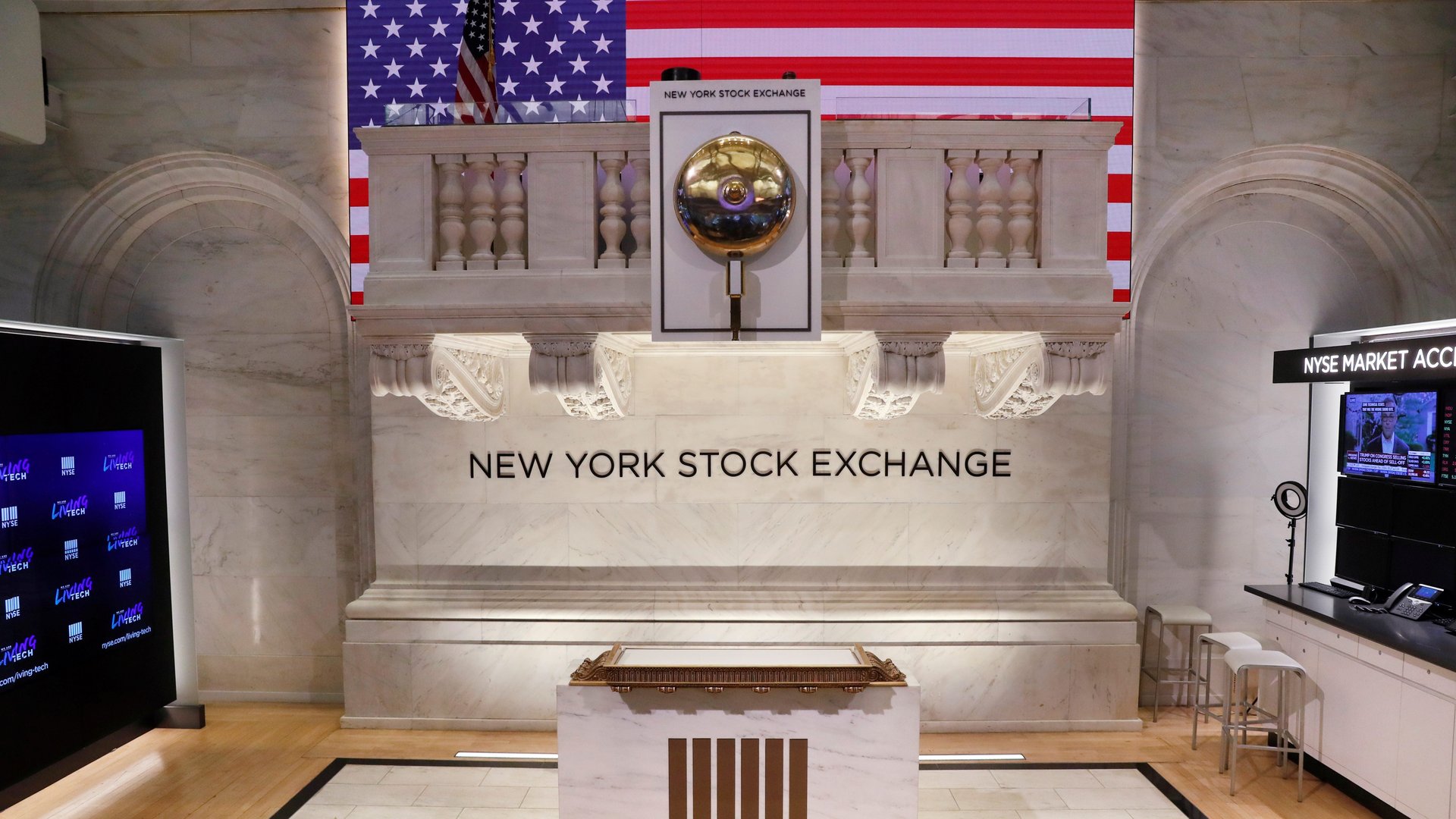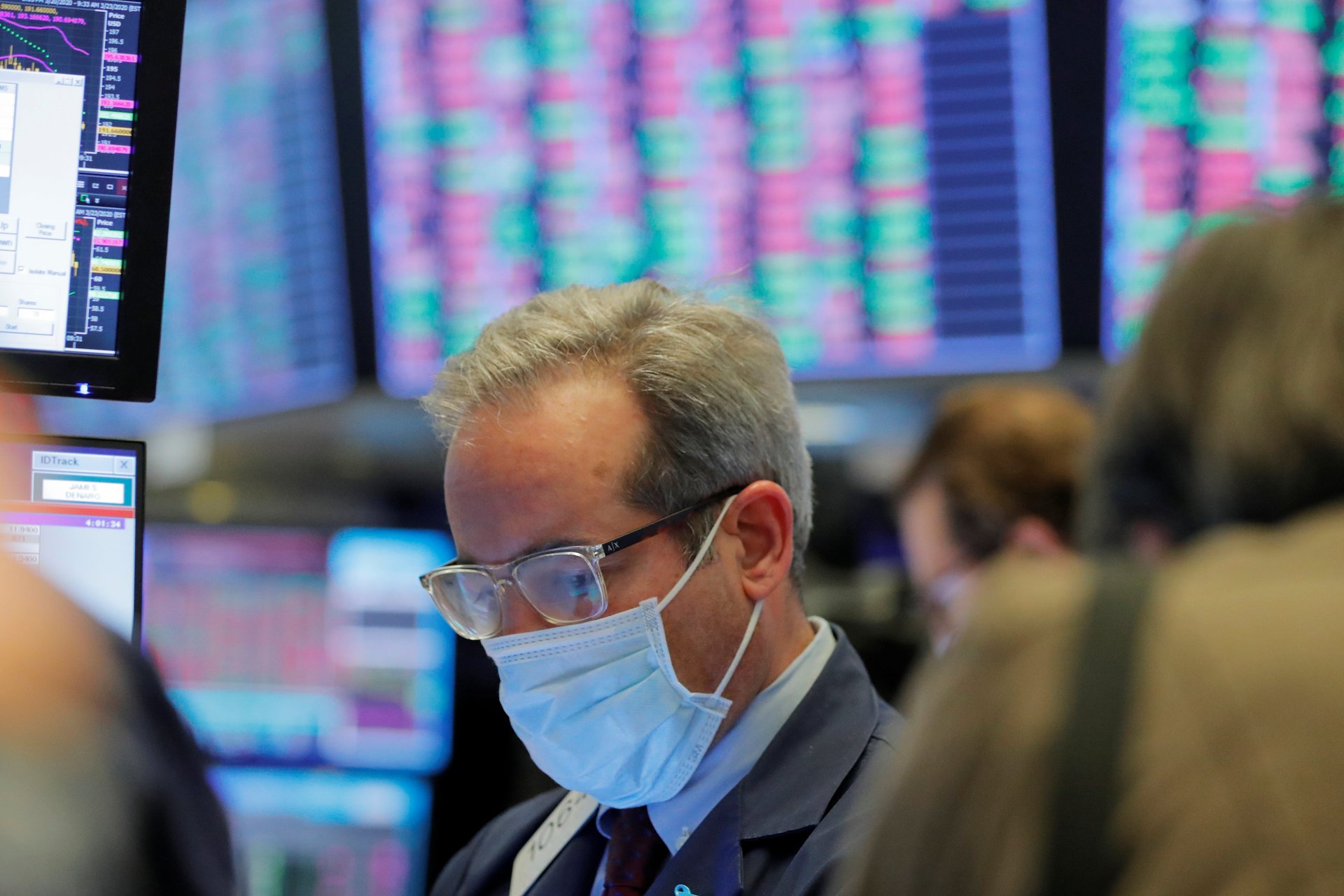For the first time in 228 years, the New York Stock Exchange will open without its trading floor
For the first time in its 228-year history, the New York Stock Exchange will tomorrow open without its trading floor. The disruption is symbolic, underscoring how the new coronavirus has run riot through the world, though the floor closure itself will likely have little if any impact on the $28 trillion stock market.


For the first time in its 228-year history, the New York Stock Exchange will tomorrow open without its trading floor. The disruption is symbolic, underscoring how the new coronavirus has run riot through the world, though the floor closure itself will likely have little if any impact on the $28 trillion stock market.
Trading will be fully electronic when the bell rings and buying and selling starts at 9:30am New York time. Most of the action already took place in a data center, and now, temporarily, all of it will. Executives are shutting down the trading floor to protect employees and stop the spread of Covid-19 as New York is declared a major disaster.
While heavy cleaning has probably rendered the exchange one of the most hygienic places on the planet, NYSE Group COO Michael Blaugrund said in a podcast that employees would still be at risk when commuting to the company’s iconic headquarters at 11 Wall Street. Closing the floor now removes the risk of a sudden, unplanned shuttering in the days and weeks ahead.
There’s no question that stock trading can proceed without NYSE’s floor and its colorful brokers. The vast majority of equity trading has been fully electronic for years: London Stock Exchange, which has roots going back three centuries, hasn’t had a trading floor since 1986. US stocks are bought and sold on dozens of fully electronic exchanges and dark pools.
That isn’t to say trading hasn’t been turbulent. Stocks dropped off a cliff this month, plunging into a bear market so rapidly that NYSE’s circuit breakers—which pause buying and selling after a sudden rout—have been triggered an unheard-of four times since March 9.
“It’s been both impressive and extraordinarily frustrating,” Blaugrund said of coping with the mayhem remotely. The market infrastructure has been resilient despite the extraordinary strain, he said, but operating remotely at such a time has been far from optimal.
“To be in market conditions that are this extraordinary and dealing with strategic questions that are this significant, and having to do it from a distance, is maddening,” Blaugrund said.
Human traders
Given that nearly all exchanges have abandoned their physical trading floors, a lot of people wonder why NYSE still has one. When the exchange was acquired by Atlanta-based Intercontinental Exchange in 2013, some thought it would mean the end of the floor at the “Big Board.” But it’s still there, and the company insists it’s a vital part of trading.

One reason to keep it around is branding. The brokers have become the human face of Wall Street, providing a backdrop and marketing punch for one of the best-known names in the financial industry. The company touts the 30 media outlets on its trading floor, and the building’s iconic neoclassical facade, as reasons to list there. NYSE’s initial public offerings are broadcast around the world, a kind of Super Bowl for Wall Street. Its bell ringing ceremony is unique, thanks to the trading floor.
NYSE also gives its floor brokers a special advantage during the day’s closing auction, which helps keep the humans relevant and in demand from customers. Closing auctions are important because they determine the day’s official final price, and many fund managers are gauged against that value.
While buying and selling is splintered among exchanges and dark pools during most of the trading day, liquidity returns to the exchange that lists a given stock during this event. The closing auction can be a good place to make big trades.
Floor brokers have a special tool called the “D Order”—which is short for discretionary order—during the closing auction. This gives the human brokers extra time to tweak stock orders at the end of trading. The D Orders are popular, and NYSE says almost 6% of the trading volume for the stocks it lists takes place at the close.
But for now, D Orders won’t be available, and floor brokers won’t be able to participate either. Other personnel, like designated market makers, who are charged with providing regular liquidity and maintaining orderly trading, will still be working remotely. IPOs can also still go ahead.
Market quality
Blaugrund said closing the floor was a hard decision to make because “the market quality from human intervention is unparalleled.” Brokers say having people around still matters, especially when markets go into a meltdown. In 2012, when a software error at trading firm Knight Capital caused it to lose $440 million in 30 minutes, there were people on the NYSE floor manually closing down stock trading.
If trading in the coming days is anything like the pandemonium of the past few weeks, this is a time when NYSE would likely much prefer to have traders and brokers still working shoulder-to-shoulder like usual. But overall, stock exchange trading has been surprisingly stable given the strain.
“Equity-market infrastructure has been a bright spot in this developing crisis,” said Justin Schack, managing director at Rosenblatt Securities, an institutional brokerage in New York. “The extraordinary economic impact and uncertainty associated with this pandemic have been driving volatility and volume to historic highs, and markets thus far have handled the stress very well.”